A pair of Chinese export armorial soldier vases and two covers, Yongzheng-Qianlong period, circa 1735-40
Lot 114. A pair of Chinese export armorial soldier vases and two covers, Yongzheng-Qianlong period, circa 1735-40; 51 ½ in. (130.8 cm.) high, each. Estimate 100,000 - GBP 150,000. Price realised GBP 175,000. © Christie's Image Ltd 2019
Decorated in a lustrous famille rose palette with a European style flower-filled urn raised on a bright blue pedestal, a deep cloud collar around the shoulders decorated with a combination of European scrollwork and Chinese cloud motifs on the matching blue ground and issuing lush peonies, on the neck the arms of Valdés Tamón for Fernando Valdés Tamón, Governor-General of the Philippines, one cover period but mismatched, the other a later lacquer replacement with original porcelain knop and inscribed underneath Febrero 20 de 1846 in black script, with later giltwood stands.
Provenance: Commissioned by Fernando Valdés Tamón (1681-1741), Governor-General of the Philippines.
By descent in the family of Valdés Tamón.
With Spink & Son, London, 21 October 1975,
when acquired by
Pablo Deutsch, Mexico City and California.
Literature: J. Mudge, Chinese Export Porcelain in North America, 1986, p. 48
R.R. Lake, La visión de un anticuario, 1999, p. 47
R. Diaz, Chinese Armorial Porcelain for Spain, 2010, p. 105.
Note: This pair of 'soldier' vases was commissioned by Fernando Valdés Tamón (1681-1741), appointed Governor-General of the Philippines by Philip V of Spain, who ordered at the same time a very similar set of vases with the arms of his patron, the King (see lot 113). Three pairs of the Valdés Tamón vases are known; in addition to this pair there is a pair in a private collection (formerly in the collection of Luis de Errazu, b. Paris 1854) and a pair in the Museum Boymans-van Beuningen, Rotterdam.
IN THE SERVICE OF THE EMPIRE
Fernando Valdés Tamón was a Knight of the Order of Santiago, a colonel and a captain of the Spanish Royal Guard Infantry and a brigadier when, in 1729, he succeeded Marquis of Torre Campo as Spain's Governor-General of the Philippines. The years of 1729 through 1740 when Valdés Tamón lived in the Philippines were the culmination of his career in service to the Spanish Empire. He was an active minister, negotiating a treaty with the Muslim sultanate in 1737 and securing key seacoast forts with additional armaments in 1739 as part of his ongoing campaign to better equip and fortify this important Spanish possession. At the behest of the King he established a school to train local clergy; he also looked after the indigenous workers by establishing maximum work hours and free healthcare.
Following a 1733 Royal directive, Valdés Tamón commissioned a local Spanish Jesuit, a professor of canon law at the Jesuit college, to draw up an official map of the Philippine islands. The map was printed in Manila in 1734 and became the standard map of the Philippines for the next century. Valdés Tamón himself drew up the plans of the presidios and fortifications of Manila and nearby Cavite whose improvement was his mission.
THE MANILA GALLEON TRADE
As the Governor-General of the Philippines, Valdés Tamón had a central role to play in the important trade between China, New Spain and Spain. He executed the Royal warrants that regulated the trade and dictated the maximum value and character of cargo and goods allowed on the annual or biannual galleons that sailed from Manila to Acapulco and back again. Valdés Tamón would have been quite familiar with the scene at the vast Parián market in Manila where Chinese merchants descended to sell their goods and with the local merchants who plied the lucrative trade and executed special orders.
Cargo registers researched by Rocio Diaz show that Valdés Tamón sent gifts, crates and chests on the Manila galleon periodically. In 1736 four large vases are specified, split between two vessels. One register reads:
...And two large China vases numbers nine and eleven...claimed to be the property of the Honourable Brigadier Sir Fernando Valdes Tamon, Knight of the Order of Santiago, President Governor and Captain General of these islands.
Valdés Tamón was appointed field marshal in 1739 and in 1740 departed Manila, shipping on the Nuestra Señora de Covadonga thirty-seven chests and crates, twenty-three small and large cases, and thirty-nine large jars. As Diaz points out, without further identifying information it is impossible to know whether the Valdés Tamón armorial soldier vases or those for Philip V were part of any of these registered shipments. Sadly, Valdés Tamón did not make it home to Spain, dying in Cuernavaca in 1741.
THE VALDÉS TAMÓN VASES AND THEIR COVERS
The pair of Valdés Tamón soldier vases in a private collection and published by Diaz have covers enameled with formalized peony matching that on the vases' shoulders with distinctive, bright blue enameled flowers in between. It seems extremely likely that all of the Valdés Tamón vases were made with these covers, which match the vases so well, while the covers with the yellow fleur-de-lys knops would have been unique to the Royal vases. The Rotterdam pair likely had their covers switched with a Royal pair at some point, while the original covers to the present pair were likely broken. The lacquered cover of one of the present vases, inscribed in black script Febrero 20 de 1846, seems to have been made in Mexico about a century after the vases were made, when the original covers broke and only one suitable period replacement could be found.
For a full discussion of these vases, the others extant, the cargo registers and Valdés Tamón see R. Diaz, Chinese Armorial Porcelain for Spain, pp. 104-116.
Christie's. The Exceptional Sale, London, 4 july 2019

/https%3A%2F%2Fprofilepics.canalblog.com%2Fprofilepics%2F1%2F0%2F100183.jpg)
/https%3A%2F%2Fstorage.canalblog.com%2F03%2F02%2F119589%2F96711876_o.jpg)
/https%3A%2F%2Fstorage.canalblog.com%2F11%2F31%2F119589%2F94773502_o.jpg)
/https%3A%2F%2Fstorage.canalblog.com%2F20%2F83%2F119589%2F94772815_o.jpg)
/https%3A%2F%2Fstorage.canalblog.com%2F26%2F72%2F119589%2F75604929_o.jpg)
/https%3A%2F%2Fstorage.canalblog.com%2F59%2F60%2F119589%2F26458628_o.jpg)
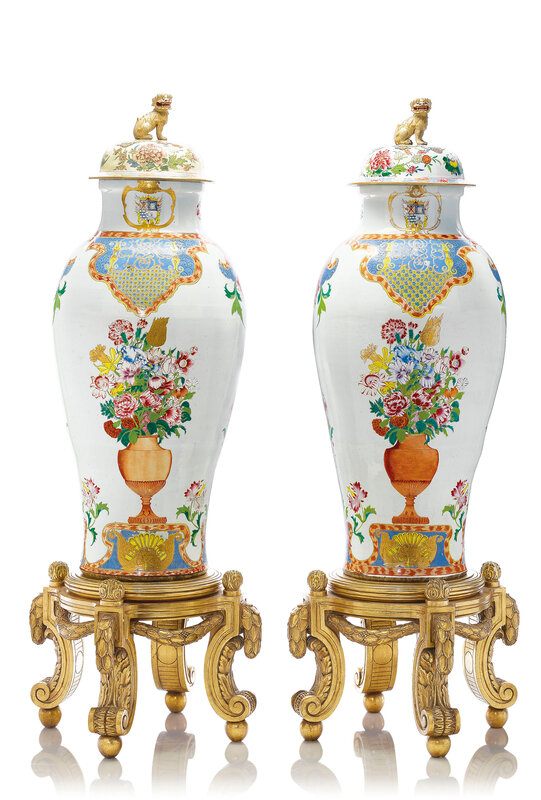
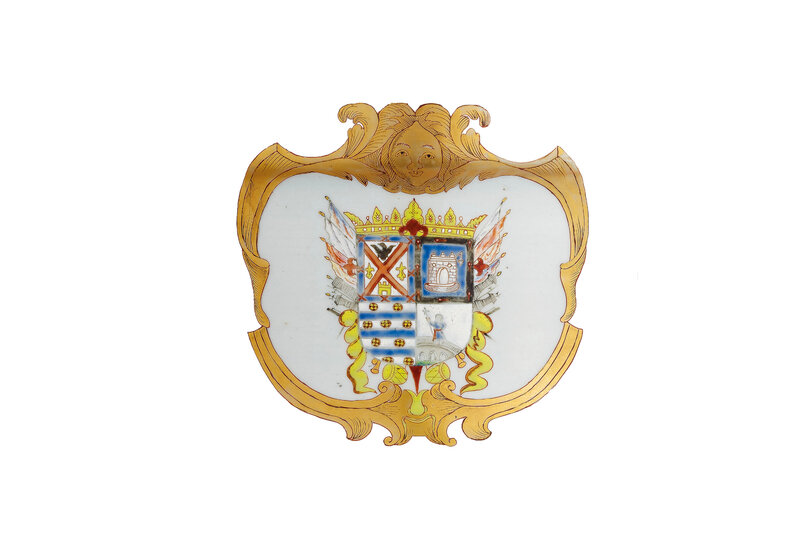
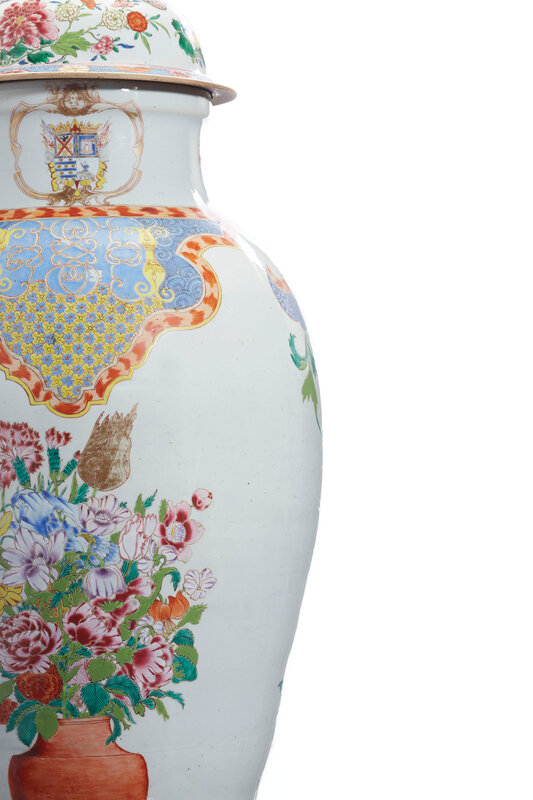
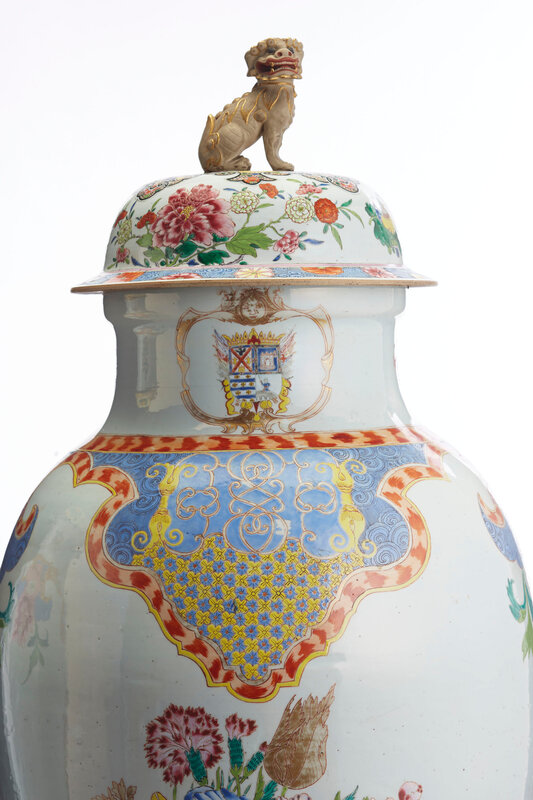
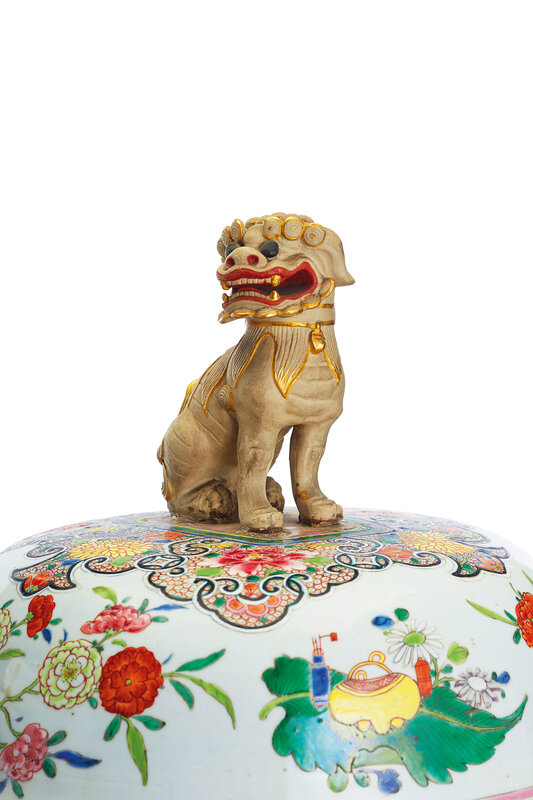
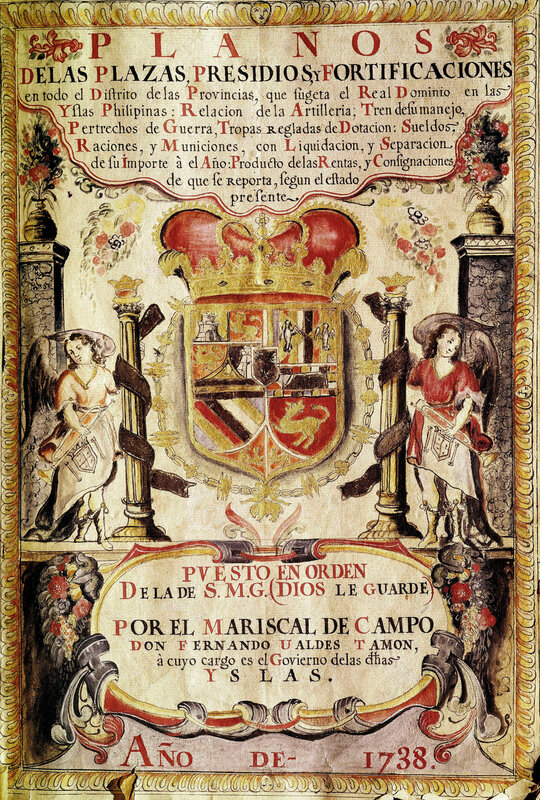


/http%3A%2F%2Fstorage.canalblog.com%2F61%2F12%2F119589%2F112289583_o.jpg)
/http%3A%2F%2Fstorage.canalblog.com%2F73%2F37%2F119589%2F112289454_o.jpg)
/http%3A%2F%2Fstorage.canalblog.com%2F75%2F15%2F119589%2F110468263_o.jpg)
/http%3A%2F%2Fstorage.canalblog.com%2F32%2F06%2F119589%2F92815108_o.jpg)